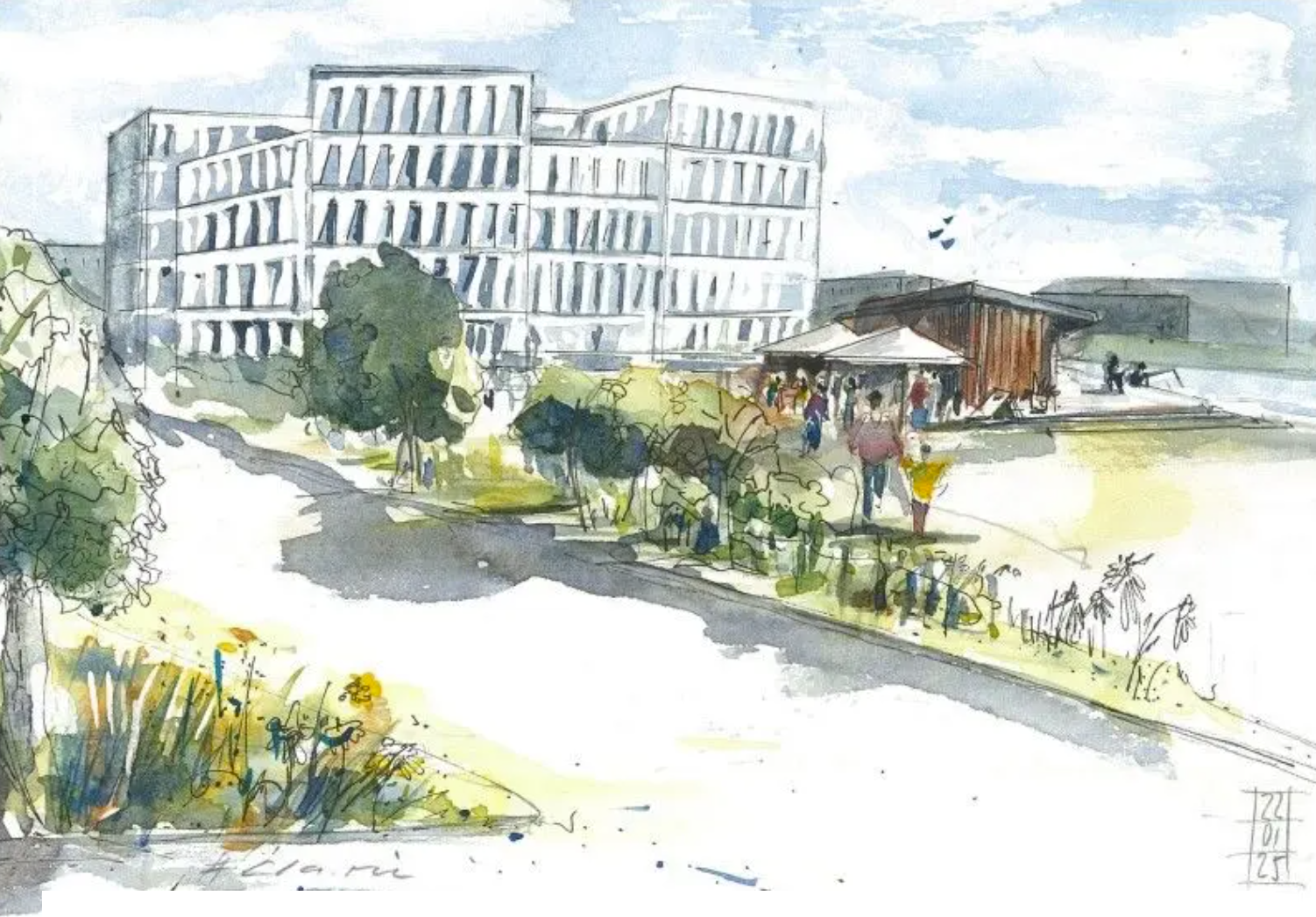Like a well-seasoned soup pot full of ideas: A house for research and development is planned in St.Gallen
A new research and development center is to be built in St.Gallen – a milestone for the Switzerland Innovation Park East.
A “House for Research and Development” is to be built in Lerchenfeld at Waldmannstrasse 11 over the next few years – an ambitious construction project with an investment in the future for the Switzerland Innovation Park East. What is still a visualization on paper today is set to become a lively place for technology, start-ups and knowledge work over the next few years.
The project is still a vision. The building application has been submitted and approval could follow after the summer vacations. However, construction will only begin once at least half of the space has been let – a strategic safeguard. “We are creating reliable planning first,” says Peter Frischknecht, Head of Campus at Switzerland Innovation Park East. This allows us to respond to the needs of the anchor tenants – which can vary greatly.
Research meets entrepreneurship
The plan is for a three-part, flexibly usable building complex with two side wings with spans of up to 12 by 12 meters. This structure offers suitable conditions for a wide variety of modular usage concepts. The plan is to accommodate start-ups, innovation departments of companies, research-related organizations and educational institutions. Close cooperation with existing institutions such as the FH OST or the HSG is being considered. International companies with a research focus in the healthcare or MEM (mechanical, electrical and metal) sectors could also find a suitable location in St.Gallen.
In the immediate vicinity of Empa, the new building is aimed specifically at private companies and application-oriented research teams. The plan is to create a place where applied research, business, industry and education come together. “Like ingredients in a well-seasoned soup pot,” is how Frischknecht describes it. The investment costs are around 23 million Swiss francs.
Approval process and economic challenge
The first companies from the MEM sector have expressed interest. “There are a number of potential tenants,” says Hans Ebinger, CEO of Switzerland Innovation Park East. However, before binding commitments can be made, further interested parties need to be approached and projects need to be fleshed out. The timetable is ambitious: Ideally, sufficient rental agreements could be concluded by the end of 2025 in order to start construction in 2026. Opening would be possible in 2028 at the earliest. The aim is to make consistent progress on the project by then. “Discussions were sought with the authorities and property owners at an early stage and many things were clarified in advance,” says Ebinger.
Source: Tagblatt




